 |
Home | Search | Browse | About IPO | Staff | Links |
 |
Home | Search | Browse | About IPO | Staff | Links |
|
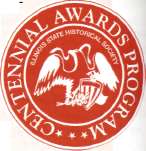
On September 30, 2005, The Illinois State Historical Society inducted 27 new centennial businesses and not-for-profits into the Centennial Awards program. On hand to welcome the new "centennials" were Chicago Bulls announcer Red Kerr and DuSable Museum Founder Margaret Burroughs, who also received special awards for their contributions to the life and culture of Illinois. A special artistic achievement award went to The Old Town School of Folk Music in Chicago. This year's Centennial Awards Banquet will be held on Friday, October 13, at the Palmer Hotise Hilton in Chicago. If you know a business or not-for-profit organization celebration its centennial in 2006, please encourage them to apply. Applications are available in this issue, on our website at www.historyillinois.org, or by calling the Society's office. And now, the 2005 Centennial Award honorees: Archbishop Quigley Preparatory Seminary Archbishop Quigley Preparatory Seminary, named for Archbishop James E. Quigley, was established in 1905 as the high school preparatory seminary for the Archdiocese of Chicago. The first freshman class began with 52 students, destined to become Chicago's future parish priests. By 1922, 600 students were enrolled at the Seminary, located at 103 East Chestnut. By the mid-1950s, the student population swelled to more than 1,300 and Chicago's "little seminary" had become one of the largest systems in the world, with both north and south seminaries in the city. In 1989, the schools were consolidated and a new high school seminary built. Joseph Cardinal Bernardin dedicated the new school of August 26, 1990. Archbishop Quigley continues to build on its traditions, instilling in students a love of liturgy and a spirit of service while providing an excellent education for Catholic boys. Brintlinger and Earl Funeral Home 
In 1883, Daniel Brintlinger Sr. founded Brintlinger and Earl Funeral Home in Maroa, Illinois. In 1889, the business moved to Decatur, where over the years the funeral home has done business at various locations throughout the city. Brintlinger also ran ambulances in Decatur up until the 1960s. Four generations of Brintlingers have operated the funeral home, with Dan Brintlinger currently running the funeral home. The business has also expanded recently and has branch funeral homes in Monticello and Cerro Gordo. As part of a celebration for their 100th anniversary in 1983, the funeral home donated 100 trees to the city of Decatur. The funeral home is steeped in tradition and remains a crucial part of Decatur's history. Chicago Defender In 1905, Robert S. Abbott founded the Chicago Defender, a newspaper that has long been the voice of the African-American community in Chicago and across the United States. Over the last century the paper has spoken out against lynching, racism, and segregation; led the movement known as the Great Migration; promoted the activities of pioneering aviatrix Bessie Coleman; led the charge to integrate the United States Armed Services; and promoted the careers of Poet Laureate Gwendolyn Brooks and renowned author Langston Hughes. The newspaper was the first to dedicate a section of the publication to children, the Bud Billiken page and is the organizer of the Bud Billiken Day Parade, an event that has showcased children since 1929 and is the largest event of its kind. Dominy Memorial Library, Fairbury, Illinois In May of 1904, Mrs. L.B. Dominy submitted to the Fairbury City Council an offer to pay for the construction and stocking of a public library. In return for her donation, she asked to be allowed to name the library for her late husband and daughter, and for the library to remain forever free and open to the public. The library has changed a great deal since the days when library-goers were allowed to check out only two books at a time. Surviving a flood and undergoing several renovations in the 1950s, the library remains in the same building designed by architect Paul Moratz more than a century ago. Today the library offers print materials, interli-brary loans, a summer reading program, Internet access, and an extensive collection of audiovisual materials. Dr. John Warner Hospital In 1856, Dr. John Warner, a physician practicing in DeWitt County, dropped out of the medical profession to pursue a career in banking, where he accumulated a small fortune. A few months before his death in December of 1905, Dr. Warner announced he was setting 20 Illinois Heritage aside a portion of his estate to build and fund a public hospital for the citizens of his hometown: Clinton, Illinois. The hospital building was finished in 1906 and the first patient admitted in 1911. Over the next century John Warner Hospital grew and expanded it services, undergoing several renovations and innovations. Today the hospital includes a Rural Health Center and Critical Access Care. John Warner Hospital employs a staff of 150, who serve more than 1,000 in-patients and more than 25,000 out-patients yearly. Faber Floral Company, Kankakee 
As far back as the 1800s in northern Illinois, the Faber family produced flowers that were sold and delivered locally by horse and cart. The business originally was located in Chicago but made the move to Kankakee in 1870. John Faber, founder of Faber Floral, moved the company to a new location in Kankakee in 1912. Today, the site houses the retail business and greenhouse, a total of 65,000 square feet now owned and operated by fourth generation descendants Susan Faber and Angela Faber Beeson. The floral shop serves customers in the Bourbonnais, Bradley, Herscher, and Kankakee areas. First National Bank of Sullivan On April 17, 1905, the First National Bank of Sullivan opened for business on the northwest corner of the town square. Organized by L.B. Scroggins, L.R. McPheeters, Irving Shuman, S.T. Bolin, and Charles Shuman, the bank's first recorded stockholder meeting took place in 1906, with Charles Shuman serving as first president and chairman of the board. In 1923, the First National Bank of Sullivan underwent renovations, including a new vault with re-enforced concrete and a silent robbery alarm. The bank continued to grow and thrive through the Great Depression. In 1980 the bank's assets totaled more than $29 million. New branches appeared and in 2000, First National began to offer Internet and telephone banking services. Throughout its history, the bank has been locally owned and operated, providing the Sullivan community with a dependable banking experience. 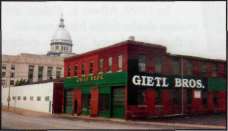 Gietl Brothers Incorporated, Springfield In 1904, brothers Henry and Louis Gietl Sr. began building and repairing wagons in the Springfield area. During 1909, the Gietl brothers witnessed the growing popularity of the automobile in central Illinois and moved gradually into the automobile repair business while also establishing an electrical shop. At one point during its long history, the company employed 50 workers. Gietl Brothers, Inc. still operates out of the same two-story building that was established 100 years ago in Springfield. Louie Gietl III took over the shop in 1974 and still oversees day-to-day operations for the business now specializing in auto body repair and refinishing. Grayslake Times The first issue of the Grayslalze Times appeared on April 20, 1905. For 100 years, the Times has reported the most important stories in Grayslake's community history, including floods, athletics, fires, and good fortune. George Savery was the newspaper's first publisher, followed by a succession of owners until 1956, when Marshall and William Schroeder Sr. purchased the Times. Bill Schroeder is still the publisher and his son, Robert, serves as vice president and general manager. The newspaper has consistently been active in the Grayslake community by informing the public of news—both good and bad. Greenville Public Library In 1903, industrial and philanthropist Andrew Carnegie, encouraged by the Greenville Ladies Library Association, contributed $10,000 dollars to help construct a public library in Greenville. The library, designed by Bloomington architect Paul O. Moratz, was dedicated on August 4, 1905. The 50'x 50' building featured a unique tower dome that has graced the tree-lined streets of Greenville for a century. The library has gained historic recognition by recently being named to the National Registry of Historic Places. Currently, the library houses 25,000 print and audio/visual materials. In addition, the library contains a section devoted entirely to children and one of best genealogical collections in southern Illinois. Illinois College, Jacksonville In 1828 when Jacksonville was just a community of 400 people, New England educators John Ellis and Thomas Lippincott discovered a hilltop spot overlooking Jacksonville, which would later become the grounds for Illinois College. Founded in 1829, Illinois College was the first institution in the state to offer a bachelor's degree and the first to conduct college-level classes. Illinois College also offered the first medical curriculum in the state. IC alums include William Herndon, John Wesley Powell, Illinois Governor Richard Yates and four-time presidential candidate William Jennings Bryan. In the fall of 1903, the school became a co-ed institution and has remained so since. Over the last century, Illinois College has seen significant expansion and increased endowment, which has helped make Illinois College one of the leading educational institutions in Illinois. For 175 years it has been a beacon of light on the hilltop prairie, and an educational leader in the nation. Illinois Heritage 21 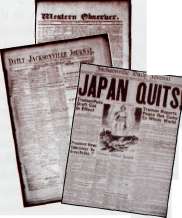 Jacksonville Journal-Courier James G. Edwards, a Boston native and former New York City newspaper publisher, started the first newspaper in Jacksonville in 1830. Edwards called the four-page weekly paper the Western Observer. The next year, he changed the name to the Illinois Patriot. Edwards sold the Patriot to Josiah Lucas in 1837, and Lucas named the paper the lllinoian. The newspaper was sold again in 1843 and renamed the Morgan Journal. The paper later became the Jacksonville Journal and then the Jacksonville Daily Journal. W.L. Fay worked his way up from a printer's assistant in 1861 to owning the paper in 1886. The Courier was a separate newspaper, which W.L. Fay and his associates bought in 1920 and merged with the Journal. The Jacksonville Journal-Courier was sold by the Fay family to Thomson Newspapers in 1982, and Thomson sold the paper to Freedom Communications in 1995. Kreger's Central Foods, Inc. 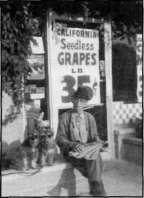
In 1893, John Kreger purchased a grocery store at 133 N. Washington in downtown Naperville. The business focused on fresh produce and meats, quality service, and customer convenience. In 1926, as the community expanded the store relocated to a new neighborhood where Kreger's Central Foods—also known as Naper Central Food Inc.—was established and remains to this day. The family-owned grocery is famous for its fresh meats and bratwurst and has been owned and operated by the Kreger family for four generations. Today the grocery store is a neighborhood institution, offering quality produce and excellence in customer service. Produce Reporter Company In 1899, Albert L. Baker, a potato dealer from Minneapolis St.Paul, developed "Baker's Potato Code", which established a telegraph language for his business transactions. In 1901, Baker expanded the vision and established Produce Reporter Company in Chicago. The company printed the first produce "Blue Book" price index, which included listing and credit information for a variety of firms in the produce industry. Until 1929 the company gave listings and ratings for produce such as milk, eggs, and hay, but since then it has focused exclusively on fruits and vegetables. The offices of the company moved to Wheaton in 1948 and moved again in 1993 to Carol Stream, where it currently does business. Over the years, the services provided by Produce Reporter Company have changed but the vision remains the same—to help make it possible for businesses to operate more safely and profitably. 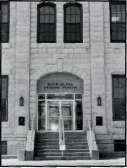
Rock Island Arsenal Museum In 1905, the Rock Island Arsenal Museum began showcasing its one-of-a-kind collection of military firearms. The collection featured weapons from all around the world. Guns used on American soil by both U.S. soldiers and Native Americans were part of the earliest collection. The museum is the 2nd oldest U.S. Army Museum after West Point and is a part of the Rock Island Arsenal. In 1959, the museum underwent a name change and became the John M. Browning Memorial Museum, but in 1986 the name reverted back to the Rock Island Arsenal Museum. The museum currently features exhibits related to the history of the Rock Island Arsenal and showcases more than 1,100 firearms. Rotary Club of Chicago 
Attorney Paul P. Harris founded the first Rotary Club in Chicago on February 23, 1905. The club started with 30 members in the Chicago area and eventually saw Rotary clubs established in San Francisco, Seattle, New York City, and Los Angeles. By 1921, every continent on the globe had a Rotary Club. The Rotarian motto, "Service above self," has long been the guiding principle of the organization. Rotarians have supported many causes and led a few battles, including the fight against polio, helping all but eliminate the dreaded disease from every corner of the world. The Rotary Club is now an organization with more than 1.2 million members in more than 31,000 clubs worldwide, operating in 166 countries. Rotary has long held a tradition of cherishing good fortune in life and business by giving back in service to others, and Rotary ONE has led the way. Rotary International In June 2005, 45,000 Rotary Club members from around the world gathered in Chicago to celebrate the founding of an organization that has changed lives in nearly 170 countries. From one acorn has grown a mighty oak tree, cultivating good will and peace around the globe. Rotary International, with Headquarters in Evanston, Illinois, is global network of community volunteers carrying out humanitarian service projects and addressing issues such as poverty, health, hunger, education and the 22 Illinois Heritage environment. Known as the world's largest private provider of international education scholarships. Rotary International partners with eight prestigious universities around the globe to educate mid-career professionals in peace and conflict resolution. Chicago Rotary was first, but Rotary International is first in promoting world understanding and peace. Semler Industries, Inc. Franklin Park John H. Lee, originally a patent attorney, incorporated Metal Specialties Manufacturing Company on November 3, 1905. The business manufactured harness hardware for horse and buggy and was located on Kedzie and Carrol avenues in Chicago. In the 1930s, Loren Semler purchased Metal Specialities and directed the company to develop several new products, including aluminum frying pans, cream whippers, Christmas tree holders, a motorized bicycle, and dashboard devices for automobiles. In 1953, Metal Specialties moved to Melrose Park and later to Franklin Park. On December 31, 1971, the company officially became Semler Industries. Since the mid-1980s, Semler has introduced such industry innovations as Ink Recovery Systems for newspapers, potable water cabinets for transportation systems, and turbine flushing systems for power plants. On the eve of its 100th anniversary, Semler is well-positioned to step into its second century. Shields Memorial Home In 1898, Hugh Austin Shields opened his own undertaking establishment in Greenfield. Shortly afterwards, Mr. Shields wrote Illinois' first embalming examination. In 1925, Mr. Shields' son, Russell, began working with his father, and the name of the funeral home becam H.A. Shields & Son Undertaking. The funeral home published an impressive slogan in its early years: "Our firm promises funeral service for all, regardless of financial circumstances.'' Today, Dan Bishop, a fourth generation descendant of the Shields family, runs the funeral home, now called the Shields Memorial Home. The business continues to serve the Greenfield area with the same care and compassion exhibited throughout the business's rich history. St. Rita of Cascia High School, Chicago In June of 1905, priests and brothers of the Order of St. Augustine founded St. Rita's College, which later became known as St. Rita of Cascia High School. The all-boys high school, located on Chicago's southside, has since sent more than 21,000 young men into the world with diplomas and a vision. In 1990, the high school relocated to a 33-acre campus after an 85-year run at its original location. Today, 800 students attend St. Rita and receive a true Augustinian education, excelling in academic, athletic, and extracurricular fields. 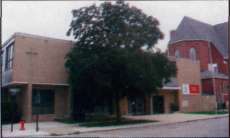
St. Mary's School, Pontiac In 1903, the St. Mary's School in Pontiac opened with approximately 100 pupils in seven grades, with a staff of five nuns from the Sisters of Charity of the Blessed Virgin Mary. As the size of the school increased, it was necessary to build a new school with a separate convent building. Classes began in the new building on September 8, 1958, with 271 children in eight grades, the staff consisting of seven nuns and one lay teacher. In February of 1980, a fire destroyed part of the new building, and classes were moved to two public school buildings while repairs were made. Today, St. Mary's School offers classes in kindergarten through eighth grade and has an enrollment of 230 students. The principal and teachers are all state-certified lay-persons, and the school continues its long tradition of giving children an exceptional education in a variety of different subjects. The Brethren Home of Girard/Pleasant Hill Village The Brethren Home of Girard was built in 1905 to provide a residence for orphans and the elderly homeless. The Church of the Brethren, led by Cullen C. Gibson, built the home to provide a "realistic Christian living experience." In the early 1920s, when Illinois orphans ceased to be wards of the state, the Brethren Home no longer served as the county orphanage. Nonetheless, the institution continued to serve the elderly with the help of a caring staff and countless volunteers. In 1976, the old Brethren Home was demolished as builders constructed a new retirement home that allowed for greater expansion. The home also received a name change: Pleasant Hill Village. The Brethren Home/Pleasant Hill Village has come a long way in the last 100 years, emerging as a superior residence and retirement community for the elderly and disabled in central Illinois. The Farmer's Elevator Company of Lowder Farmers in the area surrounding Lowder began The Farmer's Elevator Company of Lowder to deal grain, agricultural products, and farm supplies. Since the elevator began in 1905, farmers and landowners in the Lowder area have continued to own and operate the business. The elevator has survived the trying times of the Great Depression, wars, and droughts. All the while the elevator has adapted and changed with the times to serve the agriculture community of central Illinois. Illinois Heritage 23 |
|
|